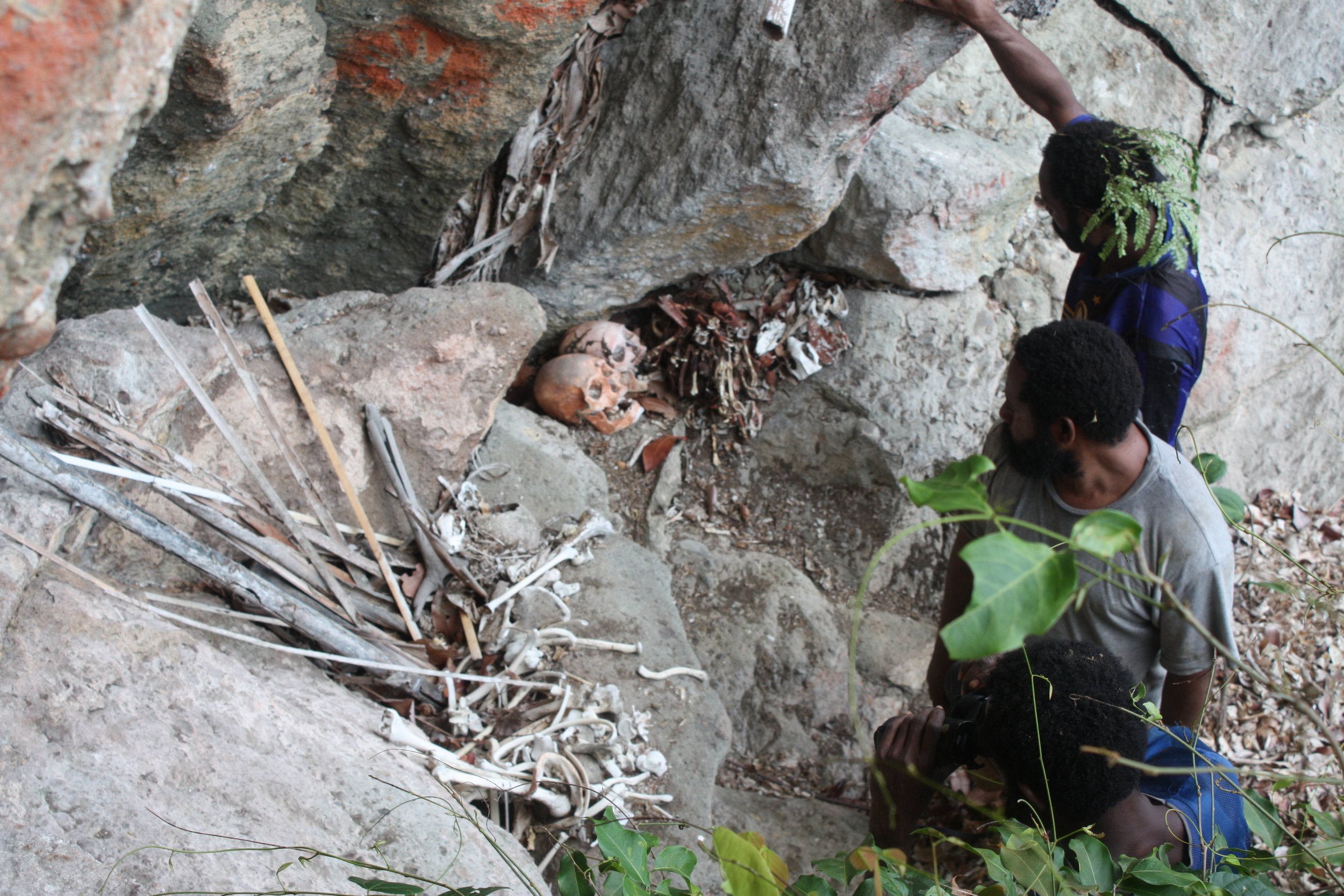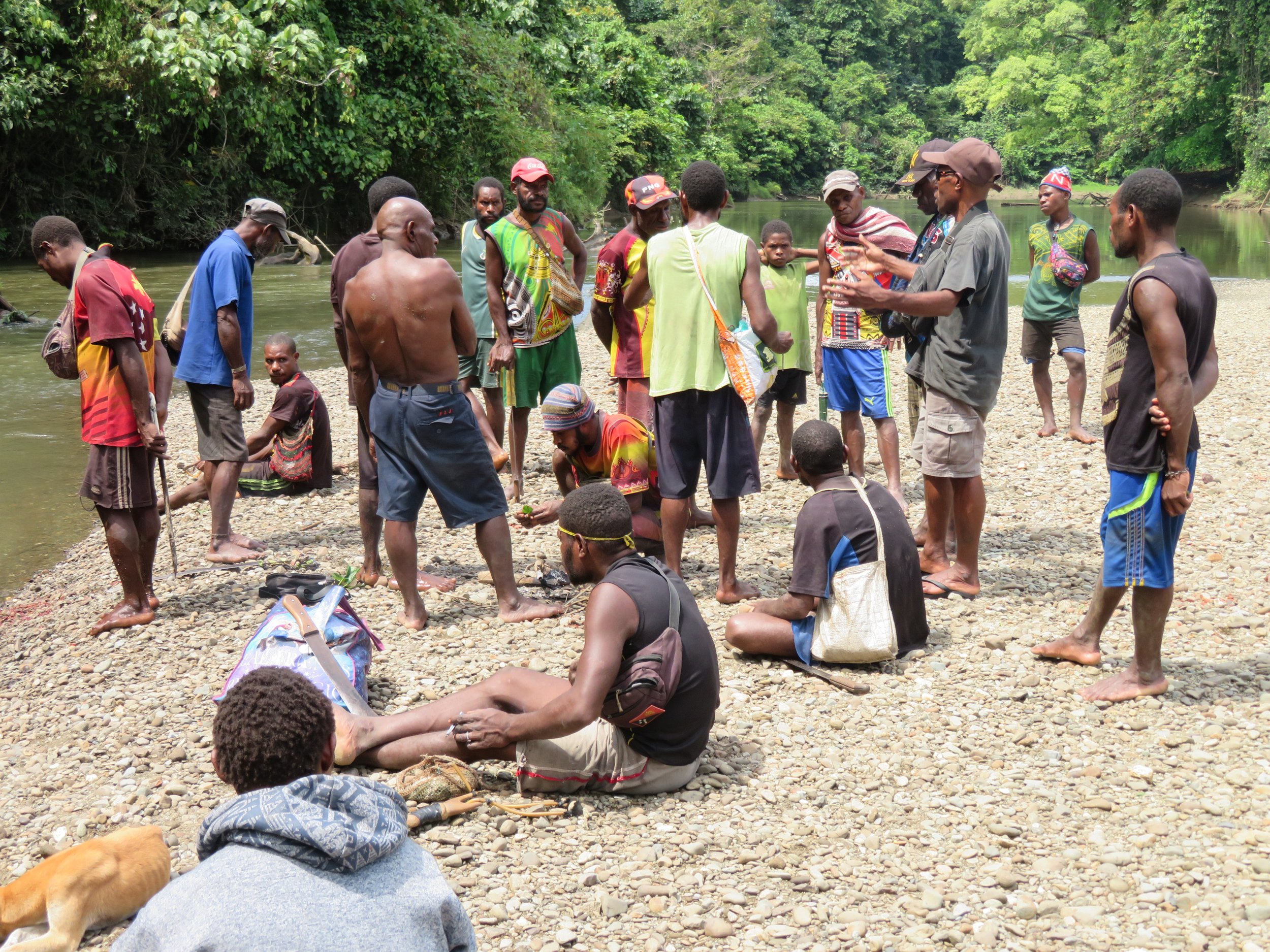
About Us
EXPLORE and CONSERVE
The Karawari Cave Arts Fund (KCAF) was founded by American anthropologist and PNG resident, Nancy Sullivan. For 13 years members of the Karawari Cave Arts Project, in East Sepik, Papua New Guinea (PNG), have been working to explore and conserve one of the largest cave art complexes in the world.
The caves are still inhabited by some of the last semi-nomadic foragers of Melanesia, and are under imminent threat by commercial logging and mining interests who would displace these remote people and destroy their sacred caves. In the process, some of the prehistoric secrets of PNG, not to mention the culture of these enduring and remarkable peoples, will be lost.

KCAF team recording cave owner stories

Human Skulls and bones at Paimbung Kanja stone cave

Nadim Cave

Awim Cave

digging out a canoe

creating a canoe

KCAF team member, Yorba, at Meakambut

Yorba working in Moinene

KCAF team member, Siggy , traveling with Imboin men

Siggy speaking with Awim men

Awim men doing forest inventory survey

Awim forest inventory survey

Awim forest inventory survey

Yamandim men

Boat to Imboin

KCAF team members (Kennedy and Chris) in Pundubung Cave - Awim

the Team on Kangareme Lake

KCAF team in Awim cave
Foresters and biologists have completed a preliminary survey that confirms the area to be an important catchment for the entire Sepik Plains. This young and fertile rainforest still supports these semi nomadic peoples and represents a fragile barrier to the flooding and destruction of all downstream flora, fauna and cultures. Conserving these caves is important for everyone’s future.
So much science has yet to be conducted in the area: archaeology, biology, anthropology, rock art, botany, and more. The entire area could become Papua New Guinea’s most fruitful and complex research laboratory, for generations of PNG scientists to come.
“Conserving these caves is important for everyone’s future”
— Nancy Sullivan
The Project is carrying out 3 main activities:
Exploring and recording 300+ caves covered with ancient hand stencils in Papua New Guinea. This involves teams of indigenous ethnographers recording the stories attached to these caves, a collaborative effort between the cave owners themselves and the Papua New Guineans working to protect them and act as their advocates. The result has been one academic article, one book under consideration at University of Hawaii Press, and several more publications in the future.
Building conservation consensus amongst cave owner communities, and protecting their unique lifestyle and history from commercial exploitation. This involves community awareness campaigns as well as a media campaign to garner international support for the rights of the hunter-gatherers still living in their caves.
Applying for World Heritage Listing based on cultural and ecological importance of the area.



